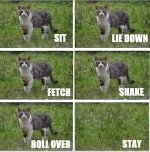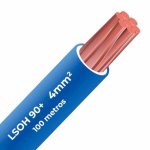You are using an out of date browser. It may not display this or other websites correctly.
You should upgrade or use an alternative browser.
You should upgrade or use an alternative browser.
Using lugs for termination
- Thread starter TMMB
- Start date
- Location
- New Jersey
- Occupation
- Journeyman Electrician (retired)
What kind of lugs are you referring to?
as shown on the attached photo, for 16A, 20A circuit breakers
- Location
- New Jersey
- Occupation
- Journeyman Electrician (retired)
Those are not required for standard building wires connected to the circuit breaker. What kind of conductors are being installed?as shown on the attached photo, for 16A, 20A circuit breakers
3mm2, 4mm2 CU/LSOH , 90CThose are not required for standard building wires connected to the circuit breaker. What kind of conductors are being installed?
Is there any documents/standard supporting that is it not required ?Those are not required for standard building wires connected to the circuit breaker. What kind of conductors are being installed?
- Location
- New Jersey
- Occupation
- Journeyman Electrician (retired)
You would need to consult the data sheets for the particular circuit breaker here's an example. I'm not familiar with your conductor types are they fine stranded conductors?Is there any documents/standard supporting that is it not required ?
- Location
- Illinois
- Occupation
- retired electrician
All breakers listed to UL 489 have terminations suitable for Class B and C stranded conductors for breakers over 30 amps and breakers 30 amps or less have termination suitable for solid, Class B and Class C stranded conductors.
The conductors in this thread are not of a type permitted by the NEC, and do not know what the stranding may be.
The conductors in this thread are not of a type permitted by the NEC, and do not know what the stranding may be.
it is
stranded building wiresYou would need to consult the data sheets for the particular circuit breaker here's an example. I'm not familiar with your conductor types are they fine stranded conductors?
- Location
- Wisconsin
- Occupation
- PE (Retired) - Power Systems
it would be in the specification for the breaker. As Don mentioned, UL489 requires breakers to accept standard stranded building wire.Is there any documents/standard supporting that is it not required ?
Are your breaker UL Listed or IEC.
kwired
Electron manager
- Location
- NE Nebraska
- Occupation
- EC
I was going to ask similar based on location and the fact he mentioned conductor size in mm.it would be in the specification for the breaker. As Don mentioned, UL489 requires breakers to accept standard stranded building wire.
Are your breaker UL Listed or IEC.
Otherwise fine stranded conductors may not be acceptable in all breaker terminals without use of a ferrule like OP has mentioned.
IECit would be in the specification for the breaker. As Don mentioned, UL489 requires breakers to accept standard stranded building wire.
Are your breaker UL Listed or IEC.
- Location
- Wisconsin
- Occupation
- PE (Retired) - Power Systems
Then may I suggest a forum which deals with more international engineering questions rather than one dedicated to the NEC and North American systems?
You could try eng-tips.com
hbiss
EC, New York NEC: 2017
- Location
- Little Falls, New York NEC: 2017
- Occupation
- EC
Those are ferrules, not lugs.as shown on the attached photo, for 16A, 20A circuit breakers
-Hal
electrofelon
Senior Member
- Location
- Cherry Valley NY, Seattle, WA
- Occupation
- Electrician
Ferrules are very uncommon in the US
Joethemechanic
Senior Member
- Location
- Hazleton Pa
- Occupation
- Electro-Mechanical Technician. Industrial machinery
Last edited:
LarryFine
Master Electrician Electric Contractor Richmond VA
- Location
- Henrico County, VA
- Occupation
- Electrical Contractor
- Occupation
- Licensed Electrician
Cats are part of God's kingdom and so are electricians. Lets get back on topic.
winnie
Senior Member
- Location
- Springfield, MA, USA
- Occupation
- Electric motor research
To clarify something for the original poster: wires can be stranded in different ways, called 'classes':
Typical building wire may be solid or Class A or Class B stranded. The strands my be compressed or compacted. Building wire needs enough flexibility for easy installation, but doesn't need to be capable of continuous flexing.
Wire that needs continuous flexing capability will have finer strands than typical building wire.
Typical building wire terminations are designed for Class A or B or maybe C stranding, but not for the fine stranding of cables intended for continuous flexing. So as you investigate if your terminals are suitable for your wire with or without ferrules or pin adapters (different things), keep in mind that a statement that a terminal is suitable for stranded wire is not a final answer if you are working with finely stranded wire.
-Jonathan
Typical building wire may be solid or Class A or Class B stranded. The strands my be compressed or compacted. Building wire needs enough flexibility for easy installation, but doesn't need to be capable of continuous flexing.
Wire that needs continuous flexing capability will have finer strands than typical building wire.
Typical building wire terminations are designed for Class A or B or maybe C stranding, but not for the fine stranding of cables intended for continuous flexing. So as you investigate if your terminals are suitable for your wire with or without ferrules or pin adapters (different things), keep in mind that a statement that a terminal is suitable for stranded wire is not a final answer if you are working with finely stranded wire.
-Jonathan
Joethemechanic
Senior Member
- Location
- Hazleton Pa
- Occupation
- Electro-Mechanical Technician. Industrial machinery







